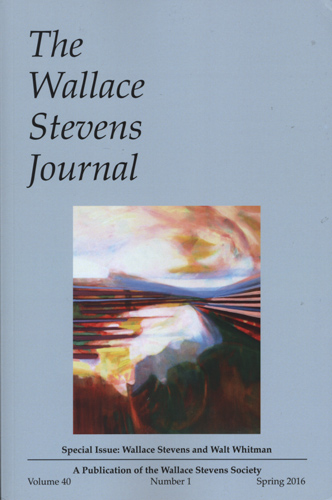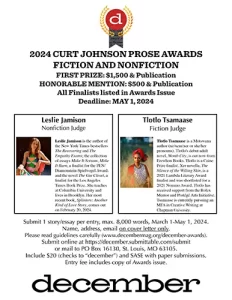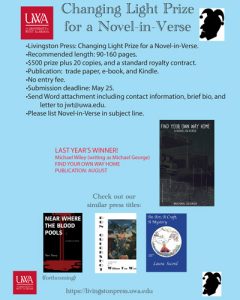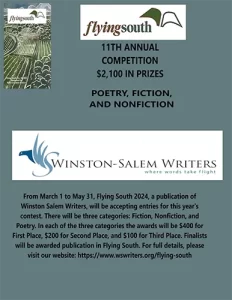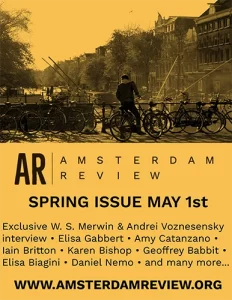The Wallace Stevens Journal – Spring 2016
Wallace Stevens (1879-1955) is getting a lot of attention lately in The Atlantic, The New Yorker, Harper’s and other publications featuring reviews of Paul Mariani’s book The Whole Harmonium: The Life of Wallace Stevens. So what better time to check out The Wallace Stevens Society’s publication titled—you guessed it—The Wallace Stevens Review, which not surprisingly carries a review of Mariani’s book.
Wallace Stevens (1879-1955) is getting a lot of attention lately in The Atlantic, The New Yorker, Harper’s and other publications featuring reviews of Paul Mariani’s book The Whole Harmonium: The Life of Wallace Stevens. So what better time to check out The Wallace Stevens Society’s publication titled—you guessed it—The Wallace Stevens Review, which not surprisingly carries a review of Mariani’s book.
Stevens might be best known to poetry followers as the man who published poetry while working full time as a Hartford insurance executive. Among his many achievements, he won the 1955 Pulitzer Prize for Poetry for his book titled Collected Poems.
The Wallace Stevens Journal began publication in 1972 and promotes the study of Stevens’s poetry and life. Included are unpublished archival materials, criticisms, studies, and, in this case, comparisons with other writers. Walt Whitman is the link in this special issue, and seven authoritative writers discuss their views and arguments for whether or not, or how much, Whitman influenced Stevens. The idea for pairing these two poets stems mostly from works by Harold Bloom who has written extensively on Stevens, and the late Diane Middlebrook who wrote a study titled Walt Whitman and Wallace Stevens in 1974.
Poetries such as “Tea at the Palaz of Hoon” are frequently analyzed and compared to Whitman. Roger Gilbert, a professor at Cornell University, in “Whitman and Stevens: Certain Phenomena of Sound,” writes: “The poem that for Bloom most fully embodies the Stevens-Whitman relationship is ‘Tea at the Palaz of Hoon,’ whose playful ventriloquizing of a solipsistic promenader of indeterminate origin he repeatedly links to the chanting Whitman figure of ‘Like Decorations.’”
For illustration, a few lines from “Hoon”: “Not less because in purple I descended / The western day through what you called / The loneliest air, not less was I myself.” And from “Like Decorations” “In the far South the sun of autumn is passing / Like Walt Whitman walking along a ruddy shore.”
You’ll do some hard thinking as you find your way through this volume. The essays are uber scholarly, with each quote and reference cited. For example, Patrick Redding of Manhattanville College, follows his 20-page essay, “Between Surface and Influence: Stevens, Whitman, and the Problem of Mediation,” with four pages of notes and citations.
Yeshiva University’s Matt Miller, in “Whitman and Stevens: No Supreme Fiction,” covers writing methods of putting it all down vs. leaving it all out, the “it” being a “personal expression of one’s life.” Walt Whitman put it all down in Leaves of Grass. Wallace Stevens, not so much.
Tony Sharpe’s essay reflects his thoughts in Q&A form, a unique take, addressing subjects like how the two poets are taught in the UK and how Stevens is situated in a “Whitmanian American tradition.”
In a small section of poetry by other writers, William Wroth of Santa Fe, New Mexico, draws inspiration from Stevens, beginning his untitled poem with lines from Stevens’s poem “The Glass of Water”:
In a village of the indigenes . . .
One would continue to contend with one’s ideas
–W.S. What would the mind be
if suddenly returned
to its primordiality?
United Kingdom’s Simon Carnell shows off his own writing abilities and gives us these silky-smooth lines from his poem “The No-Star”:
In a northern capital the light is rationed.
The capital is near but recedes.A traveler waking in a no-star motel
re-boots from not knowing if he’s who whereor when. And proceeds, in a white hire car.
The Wallace Stevens Journal is no beach read. It has the air of an insider’s magazine, but that doesn’t negate its value for a general audience. It’s a way to learn about Stevens through words and opinions of those who study and teach his works.
Regarding the relationship between Whitman and Stevens, I think Matt Miller sums it up nicely: “Perhaps the most important factor uniting Whitman and Stevens is the enthusiasm bestowed mutually upon them by some of their readers.” Whether you’re a reader of either poet or neither one, you might find it interesting to peruse this journal. Who knows, you might even get hooked.
[www.wallacestevens.com]

